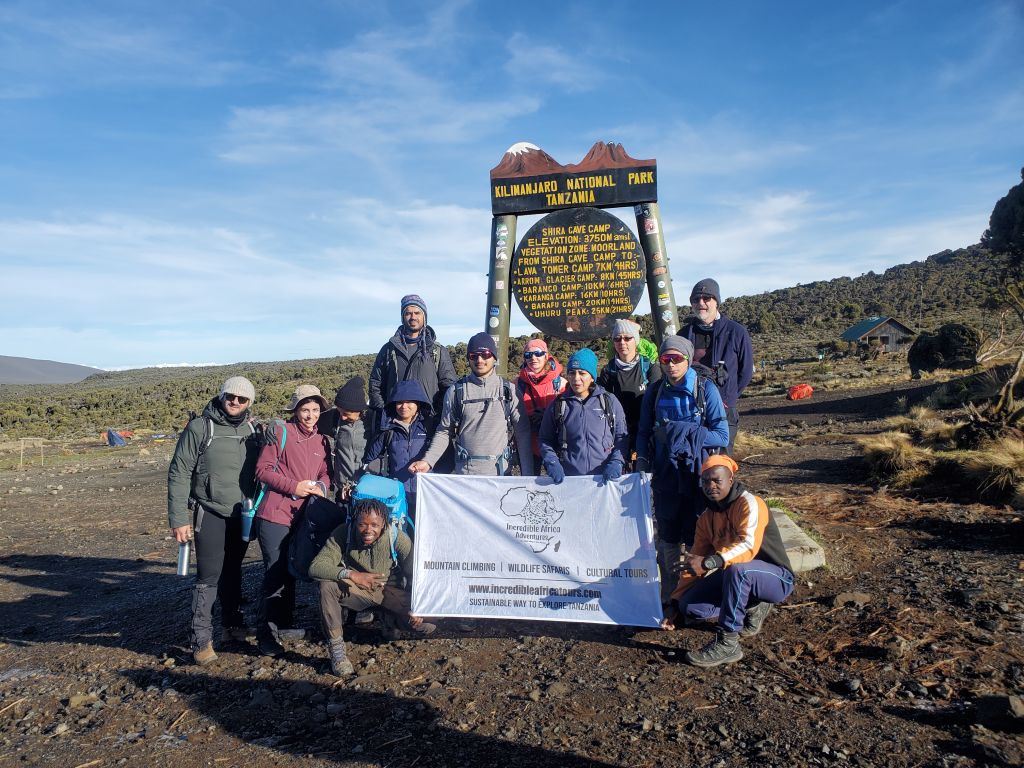Climb Mount Kilimanjaro for Charity with Incredible Africa Adventures
Blog

The best time to climb/trek Mount Kilimanjaro is the period between December – March, and June – October. The former season is generally colder than the latter but is also often quieter. Most people ask themselves this question about the best time to climb Mount Kilimanjaro, and here is our brief information about the best time of the year to climb Mount Kilimanjaro. Choosing the best time to climb Mount Kilimanjaro is an essential part of planning your adventure to the Roof of Africa. While Mount Kilimanjaro is a year-round destination, specific months offer better weather, fewer crowds, and an overall improved experience. Here’s a comprehensive guide to help you decide the ideal time for your Kilimanjaro trek
January-March
January through March is a good time to climb Kilimanjaro. The weather is pretty stable and there isn’t much rain. It is however colder during this period. Snowfall at or near the summit is quite likely. Perfect for climbers who prefer solitude and colder, snow-laden scenery.
April-May
April and May are the rainy season months. It is not a great time to hike Kilimanjaro. Heavy rainfall on the lower reaches of the mountain is common. Cloud cover and poor visibility are also significant during this period. The long rainy season is the least favorable time for climbing Kilimanjaro.
June-October
June through October is the busiest season on the mountain as it coincides with the summer holiday period in Europe and North America. The weather is also very good. Generally dry and warm during the day. Best for those seeking stable weather, clear views, and vibrant social interactions on the trail.
November-December
November is a light rainy season. The Rongai makes for a good choice during this month as the North tends to stay dry. December is fast becoming a popular season, despite being very cold on the summit. Intermittent light rains, particularly on the southern slopes.
Why Weather Matters on Kilimanjaro
The weather on Mount Kilimanjaro varies greatly due to the mountain’s distinct ecological zones:
1. Rainforest Zone (1,800–3,000m): Humid and warm, with occasional rain.
2. Heath and Moorland Zone (3,000–4,200m): Cooler and drier with stunning alpine views.
3. Alpine Desert Zone (4,200–5,000m): Cold, arid, and windy.
4. Arctic Zone (above 5,000m): Freezing temperatures with snow and ice at the summit.
Selecting the right season ensures better trail conditions, higher summit success rates, and an overall enjoyable experience.
Tips for Planning Your Kilimanjaro Climb Around the Best Time
1. Book Early: If climbing during the peak season (June–October), secure your spot months in advance to ensure availability of experienced guides and accommodations.
2. Consider Your Preferences: Do you prefer quieter trails or a more social atmosphere? This will help you decide between December–March and June–October.
3. Choose the Right Route: During rainy months, opt for the Rongai Route, which is drier and less affected by weather conditions.
4. Prepare for Temperature Extremes: Regardless of the season, temperatures near the summit can drop below freezing, so pack accordingly.
Why Climb with Incredible Africa Adventures?
At Incredible Africa Adventures, we specialize in customizing Kilimanjaro experiences to match your preferences and schedule.
Conclusion: Your Perfect Climbing Season
Whether you prefer the serenity of the colder months (December–March) or the vibrant energy of the peak season (June–October), climbing Mount Kilimanjaro is a life-changing experience. With proper planning and guidance from Incredible Africa Adventures, you can conquer Africa’s highest peak and create unforgettable memories.
Start Planning Your Kilimanjaro Adventure Today!
Contact us for personalized advice and exclusive packages tailored to your dream climb. Let’s make your journey to the Roof of Africa an experience to treasure forever!
Drop us a line. Our Safari experts will answer all your questions in 24 hours